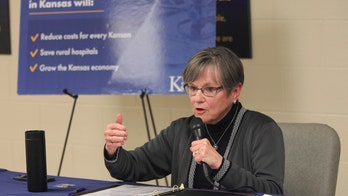United States Postmaster General John Potter delivered a grim package to the House Oversight and Government Reform Committee Thursday: mail volumes continue to decline while the cost of delivering the mail continues to go up, which is putting the United States Postal Service in dire straits.
“Our current projections show that we will risk running out of cash in early fiscal year 2011,” Potter told the committee. A recent report from the Government Accountability Office paints an equally bleak picture for the Postal Service’s long-term economic outlook. It projects that the Postal Service will lose $238 billion over the next ten years if the organization makes small or no changes to its current business model.
One of the main causes of the current budget crunch revolves around the way the Postal Service funds their pension plan. Unlike every other federal agency, it is required by law to pay into the Civil Service Retirement System an amount close to the full cost of an employee’s participation in the program. As revenues to the Postal Service have decreased, this model has become unsustainable. The Postal Service requires Congressional action to change the current benefit structure.
The fact that people aren’t sending as much mail as in years past isn’t helping the bottom line either. “The federal government is mailing less, most businesses are mailing less, and most Americans are mailing less. Going forward we think that trend is going to continue,” says Potter. And businesses, according to Potter, have already started to adjust their business plans accordingly, “The ideal model for these folks is 100% of bills presented and paid online.”
Going forward, the Postmaster General said that cuts to facilities, delivery days, and non-career staff would be necessary in order for universal mail service to remain viable. Potter suggested cutting delivery from six to five days, which independent analysis says will save approximately $30 billion over ten years, and decreasing the number of mail processing facilities by roughly half, from approximately 300 to 150 full time centers.
Those sentiments were echoed by a GAO report that suggested that Congress should consider ways to alter the Postal Service’s statutory and regulatory framework, in order to “reflect business and consumers’ changing use of the mail.”
However, many of those solutions did not appeal to skeptical lawmakers. Rep. Stephen Lynch (D-MA) worried that trimming a day off the delivery schedule would adversely affect universal service and the current postal labor force. Rep. Jason Chaffetz (R-UT) said that switching from six to five day delivery would only trim about 15% from the budget hole, and not do enough to fix the Postal Service's larger woes, “It’s not the panacea to fix all these problems.”




